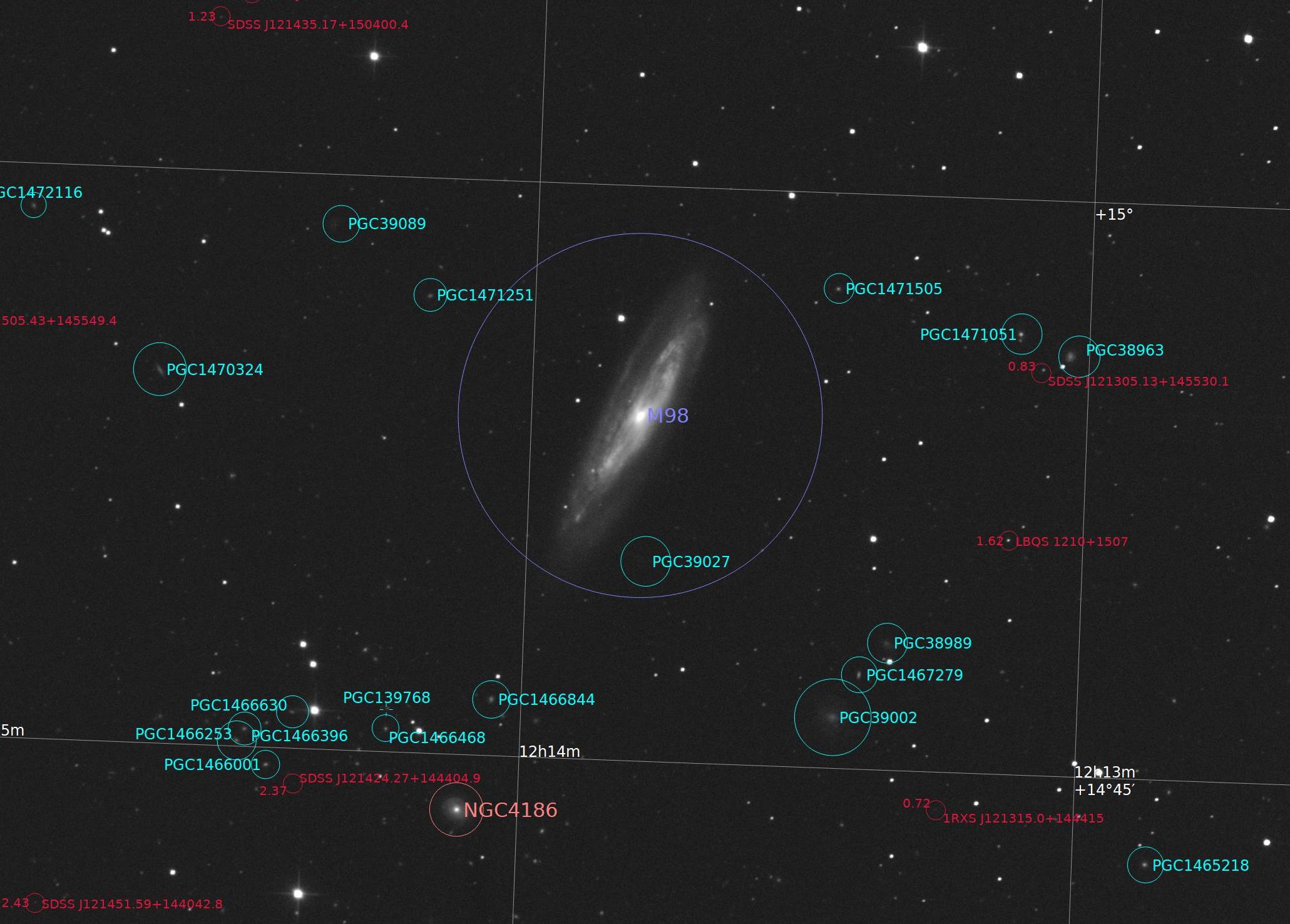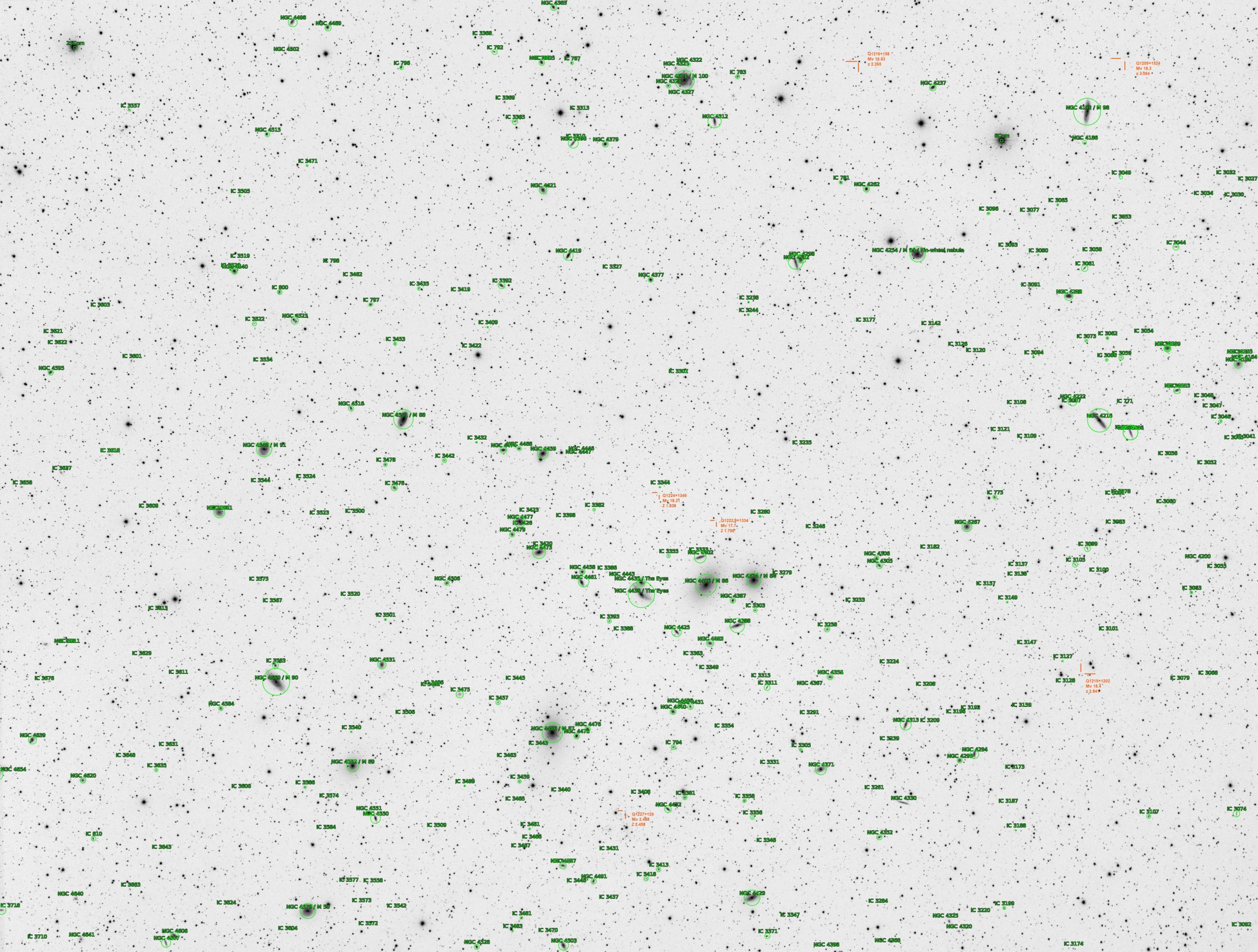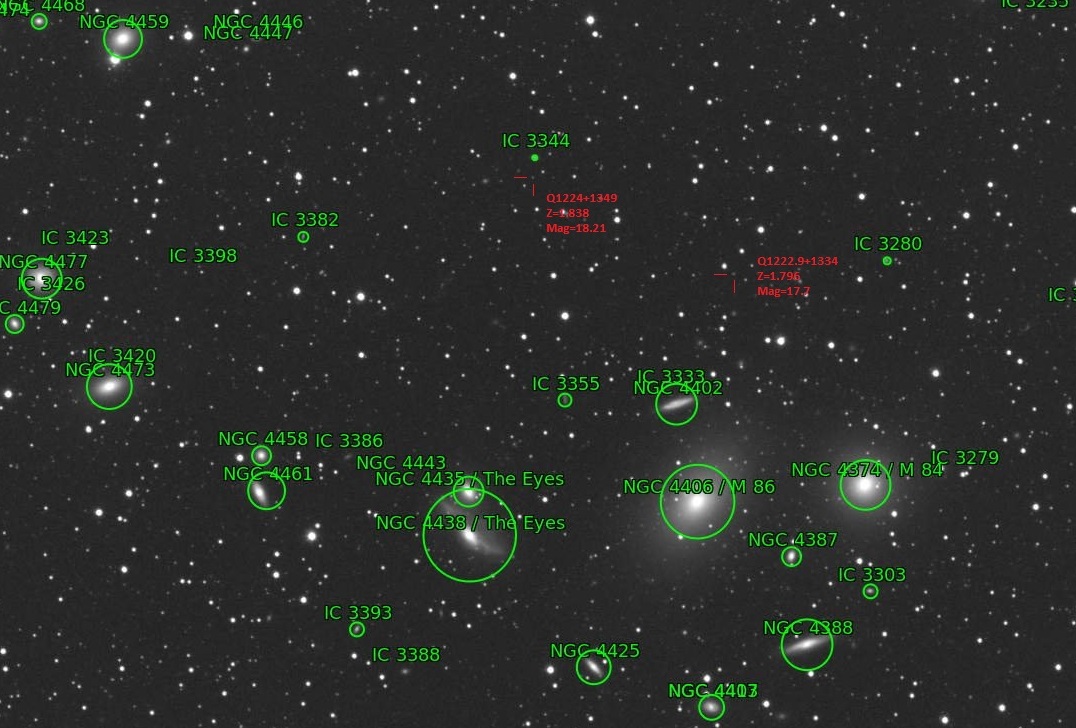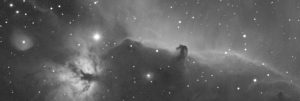40mnn exposure (L:8x300s)
Acquired on the 17th of March 2020 with 8″ ONTC
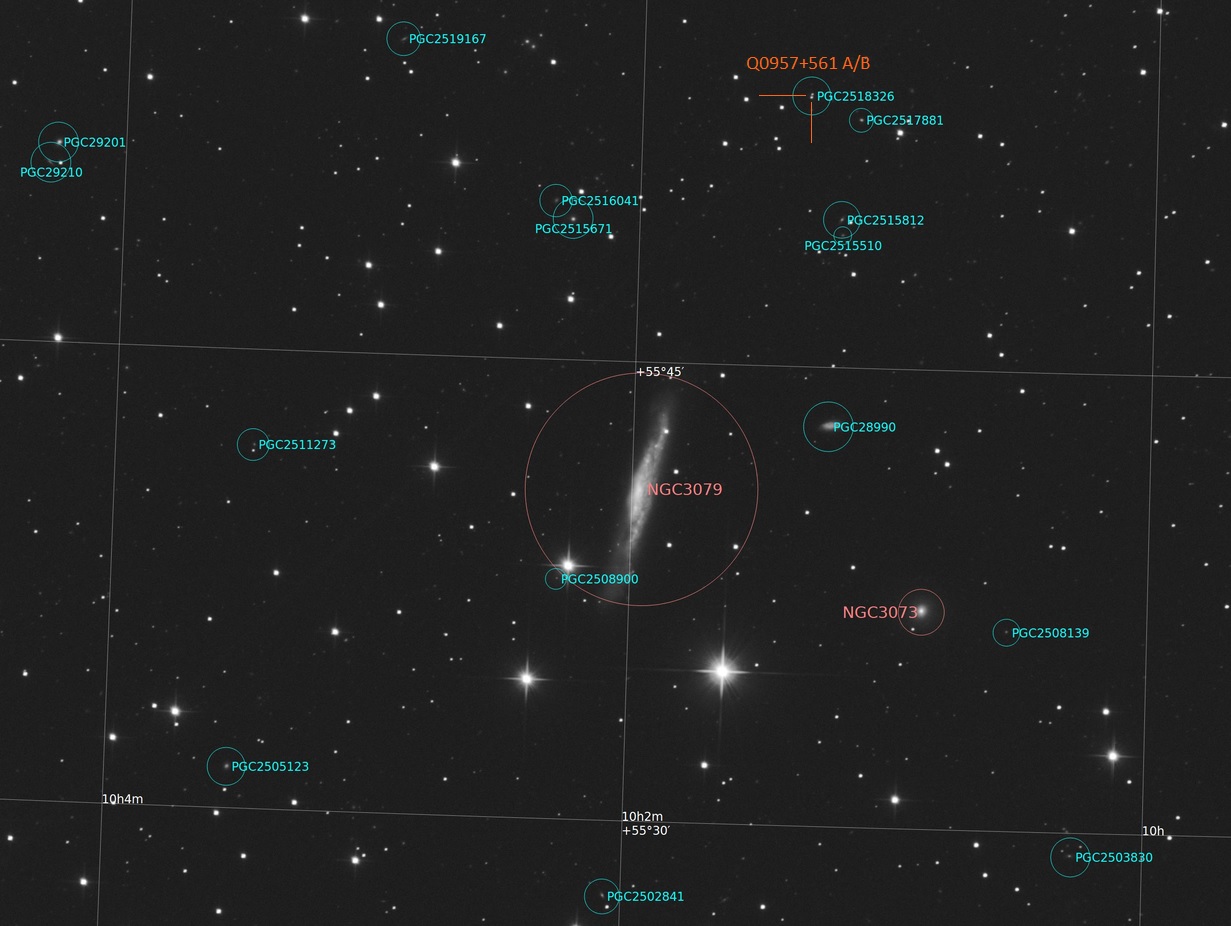
Setup: TS ONTC 200/800, 2″ Feathertouch, AZ-EQ6, QHY163m gain=100, OAG-M, QHYCFW2-M, AstroLink 4 mini. Software: APT, Stellarium, PHD2
A twin quasar!?? gravitationally lensed ?!! Well… it seems to be a good excuse for imaging the field…

